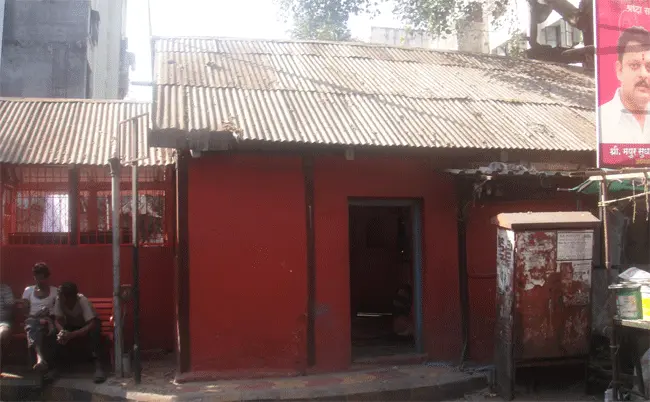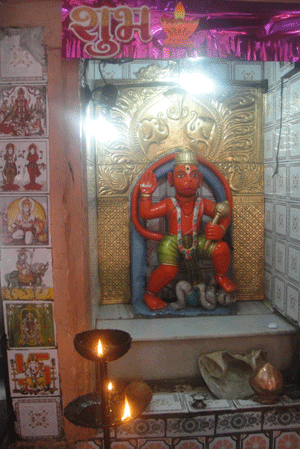
Pune Then:
The majority of the human dwellings and settlements tend to bloom in the vicinity of a river bank. There was a human settlement on the banks of river Mutha in present-day Maharashtra. The river Mutha confluences with the Mula River and the settlement on the right bank of Mutha is the seeding or beginning of the city of Pune. This settlement area is presently known as Kasabe in Pune. Today, Pune is one of the best-known cities in India. It is also known as the cultural capital of Maharashtra.
Shivaji Maharaj was once a resident of Kasabe. Kasabe was once destroyed completely by Murar Jagdeo commanding the Adil Shahi force in the year 1630. It was during Shivaji Maharaj's time that the city was recreated with Kasabe Pune. With Kasabe Ganapati temple and Lal Mahal for his mother, Pune once again became habitable.
The real development of Pune started once Bajirao Peshwa settled down in Pune with the city as his headquarters of administration. New areas were developed and were known as Peth. Peth is a business location. [We could see that even Bangalore was developed with many Pet.] New peth was either named after the person who had developed it or it was called by the name of a day of the week.
Name Pune:
As per the historians there existed a Puneshwar Shiva temple along the banks of the river Mutha in Pune. Along with Puneshwar there existed another temple named Narayaneshwar. In the late thirteenth century, Puneshwar temple was pulled down and converted into a dargah now called Younger Sheikh Salla Dargah, which stands in its place to this day. This place might have got the name Pune from Puneshwar.
Raste Peth:
Raste Peth is a familiar location in Pune. It is at a walkable distance from the Pune Railway station. The King Edward Memorial Hospital is one of the famous health centers of the city. The Raste family had developed this location. This is the surname of a family which was an important feudal family from the Maratha Empire. Their original surname was Gokhale. They earned the Raste title which means one who displays fairness [in Marathi], from the Bijapur monarchy for their integrity and honesty. Rasta Peth, a locality of Pune originally called Shivpuri Peth, was founded by and named after the family. Raste assisted the Peshwa in their Gujarat, Malwa & Karnataka military campaigns. Rastes built several Temples, Ghats, and Palaces in Wai and Pune. Their family house in Pune, the Raste Wada, was built by Thorale Madhavrao the son of Nanasaheb, between 1779 and 1784 and later given to Rastes. Raste Wada located in Rasta Peth of Pune is one of the largest remaining Wadas.
Rastes' cavalry retinue:
Rastes’ had maintained a cavalry that included camels [camelry] and horses. Their force included people from all faiths and beliefs. They had built many temples for worship. While many temples were built near the Raste Wada, there were few temples built by the troops where they had their camp.
It was around 150 years ago some people found a growing stone or you can say a stone was popping up from the ground at this place. Inquest people started examining the place. When they excavated the place, a huge quantity of ‘sendur’, rudrasha malas, and tulsi malas along with the idol of Sri Maruti was found.
Lakheri Maruti mandir road:
The mandir is located just a three-minute walk from Raste Wada Palace. The road itself is known as Lakheri Maruti Temple Road. While Untade Maruti temple is known to many, this temple is older than that of Untade Maruti temple. When walking perpendicularly from Raste Wada palace and crossing Sardar Moodliar road [in Google Maps it is Mudaliar road] one will get to Laheri Maruti temple road. Moodliars are popular people of Pune and Sardar Moodliar is the person who donated land for KEM hospital way back in 1912.
Mandir for Maruti:

The cavalry camp of Raste’s force was camping in and around Raste Wada. One such cavalry which was camping in the present day Lakheri Maruti temple road had built a temple for Sri Maruti for their worship. For the reason better known to the Lord for some time the Lord was not under worship. The idol was abandoned and forgotten.
It was around 150 years ago some people found a growing stone or you can say a stone was popping up from the ground at this place. Inquest people started examining the place. When they excavated the place, a huge quantity of ‘sendur’, rudrasha malas, and tulsi malas along with the idol of Sri Maruti was found.
With all reverence to the cavalry who were worshiping Sri Maruti at this place, Sri Maruti was reinstalled [punar pratishtha] at the very same place. From then on this Maruti who reemerged to bless His devotees had been drawing a large number of devotees. Lord is popularly known as Lakheri Maruti.
Lakheri Maruti mandir:
This temple also happens to be in the middle of the intersection of Lakheri Maruti Mandir Road and Vitthalrao Kangle Road in Rasta Peth. The temple is under a huge banyan tree. The entrance to the temple is north-facing with a board proclaiming the name of the temple with its address. One enters the small grilled verandah of about eight by ten feet [where on both sides the puja materials are stored] leading to the main temple. Then comes a big hall of about twelve by fifteen built east-west, on both sides of this hall small doors lead to the road. On one side there is sannidhi for Sri Ganesh and on the other side sannidhi for Sri Panduranga – Raghumai.
Then comes the hall of eight by ten in the middle of which there is a beautifully built mandap with a vimanam equally beautiful housing the deity of Sri Maruti. In front of this mandapam is a small portion with an iron grilled in which the deity of Sri Maruti is placed without any paraphernalia, simple.
The deity which one sees in the front is the one which had reemerged and the one which is seen in the mandapa is a later installation. Pujas are conducted for the deities. Both the deities are known by the same name ‘Sri Lakheri Maruti’.
Lakheri Maruti I:
This murtham is kept and installed in the very same place as it was first found years ago. The murtham is of hard granite and is seen in a slightly inclined position. The murti of Sri Maruti is about four feet tall. The murtham is of 'ardha shila' type ie. rock embossed type. Sri Maruti is facing north. Lord is seen in standing posture. Under His left raised leg a demon who is pinned by the Lord with His left lotus foot. His right leg is elegantly bent with the lotus foot is firm on the ground. The tail of the Lord rises and goes behind His head. In His folded right arm Lord is holding a mace. On His left arm, He is holding ‘Sanjeevi parvat’. Lord is seen wearing a crown on His head. The straight straight-looking charming face of the Lord will remind His devotees of his name ‘Sundaram’. His Bright radiant eyes shower blessings on His devotees.
Lakheri Maruti II:
The murti of the Lord is seen in the background of the Lakheri Maruti I, on a raised platform and a later installation. The murtham is a full statue. The murti of Sri Maruti is about five feet tall. Lord is seen in standing posture. Under His left raised leg a demon is pinned by the Lord with His left lotus foot. His right leg is elegantly bent with the lotus foot is firm on the ground. The tail of the Lord rose taking a full circle goes behind His head. In His folded right arm Lord is seen as ‘abhaya mudra’ implying His devotees need not fear for anything. On His left arm, He is holding a mace. Lord is seen wearing a crown on His head. Straight looking charming face of the Lord will remind His devotees as to why He is named and known as ‘ Sundaram ’. His Bright looking eyes shower all blessings on His devotees.
Location of the temple: "Lakheri Maruti mandir, Raste Peth, Pune "
Experience
Radiant bright eyes bestow everything a devotee needs for a righteous living. Today the devotee requires it more; hence there are four eyes of the Lord of this kshetra waiting to grant the blessings. Why make Him wait? Come and be blessed.
SRI HANUMAN THINKS DIFFERENTLY, THINKS FAST
THINKS AHEAD AND ACTS FOR SURE
Ed [July 2019]
Updates: [Jan 2025]
